
|
| Accept Cookies | Customize | Refuse Cookies |
Roberto92 www.juzaphoto.com/p/Roberto92  |
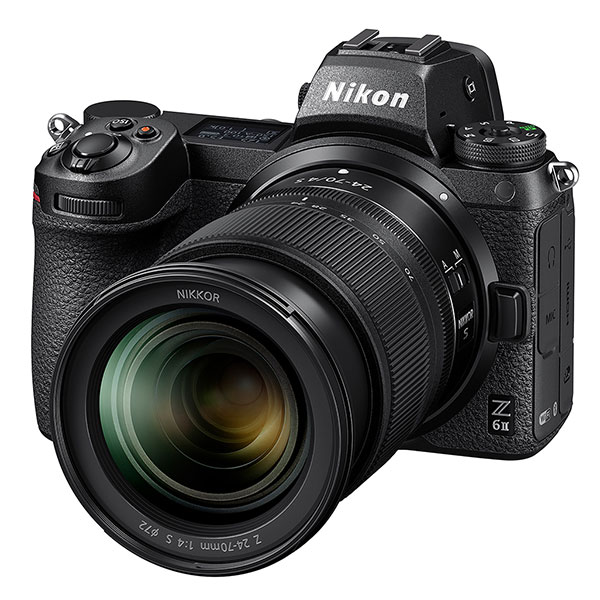 | Nikon Z6 II Pros: Construction, ergonomics, final yield, double slot, EVF and LCD, responsiveness Cons: AF still to be improved Opinion: I used the Z6 for a year and for a month I've been switching to Z 6II. I won't repeat the same things I said in the Z6 review, as the "general" benefits are the same. I'm just going to talk about the improvements. A revolution? No. It is an interesting upgrade that "corrects" the most obvious shortcomings of the first generation (first of all the double slot and the optional grip "serious" and not a banal battery pack, ah yes and banding in "limit" conditions) and improves some aspects (greater responsiveness, wide-area eye-focus mode and video etc., some additional "conveniences" in the menu). With the lenses not designed for speed (14-30Z, 35Z, 85Z) I do not notice great differences in the AF, but on the 70-200 FL the difference can be noticed as it is: significantly improved tracking and reduced lag. Of course, depending on the subject you always have to act on the parameters (sometimes it is convenient the car AF-C, other times the area modes). Also, with the new buffer we are on another planet and it does not spoil even the slightly improved burst. If the Z6 "gets away" with some sports photography situation, I would say that the Z6 II comes out (almost) with its head held high (provided that we study the situation and the settings well), although not excelling: the lag and the black screen do not convince me yet completely. Undoubtedly, the two Expeed 6s pave the way for further possibilities for improvement, let's not forget the not indifferent jump that the Z6 made with firmware 3.0. In the end it's just a matter of algorithms and I'd say the future-proof computing power is not lacking. In terms of compatibility with third-party products, I have problems with Godox flashes, my TT685 and V860II underexasure about 2/3 STOP and the 350N only thanks to a very recent firmware is back operational (albeit with the same subexposure), so we will have to wait for the ad hoc firmware for the Z 6II. With the SB-700 obviously no problem. With third-party lenses, I don't think there are any further issues than those already known with the Z6 (especially with certain Tamron/Tokina), I personally am using it with the excellent Sigma 105 macro OS and it works perfectly, focus stacking included. In any case, to avoid nasty surprises, check if you have potentially incompatible lenses/accessories. In terms of image quality and ISO sealing I do not know any differences from the Z6, although there are those who say that the dual processor offers a certain advantage. I can't tell you anything about videos, I don't do anything about them, but certainly the eye focus in such a mode is welcome news for videomakers. It comes with the EN-EL15C which has a higher capacity than the B, and you notice it (I had already bought a C for the Z6). Charging in the room, even during operation, is definitely an interesting function, but I do not use it because it is a "stress" to which I do not want to subject the camera electronics (I will be a little paranoid). In conclusion, I think the Z 6II is a good upgrade compared to the first generation. The main "problems" have been resolved and the gap on certain aspects (AF in the first place) with respect to competition has narrowed, but we will still have to wait for the full maturity of mirrorless Z. Who do I recommend the Z 6II to? Undoubtedly to nikonists who want to jump to mirrorless, for me it is the most versatile Nikon ML. Those who already have a Z6 must honestly ask themselves whether they feel "limited" by shortcomings compared to ii, if the answer is no, in my humble opinion there is no need for an upgrade. In any case, the II is a machine that does not disappoint, especially when combined with the excellent Z optical park (still deficient, but promising). Grade 10-. sent on July 06, 2021 |
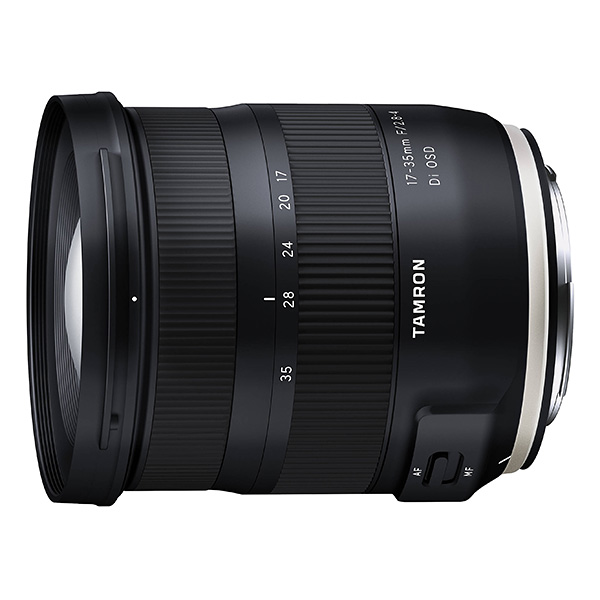 | Tamron 17-35mm f/2.8-4 Di OSD Pros: Sharpness, yield, bokeh, brightness, price, weight, upgradeable, 77mm filters Cons: AF, lack distance scale Opinion: Excellent lens that fully reflects the excellent standards achieved by the new Tamron lines. Beautiful aesthetic "business style" (except for the matte paint too prone to scratches), very good build quality in relation to the low weight: it does not give me at all a sense of fragility, the movements of the helicoid are fluid and precise and the optics are well balanced. It mounts the widespread 77 mm filters. The only drawback is the af of old conception, there is no "full-time manual focus" (or MF override), as is now possible on almost all modern lenses, so between MF / AF there is just a physical trigger ring-engine, therefore you must NOT focus manually if in AF mode. The focusing speed is good but not excellent, typical of non-ultrasonic motors. Optically, however, it is a jewel: very sharp already at TA (it is an F2.8 up to and including 20mm and an F4 beyond), especially in the center of the frame, but the edges are still excellent; the color rendering is faithful and the contrast very good; excellent resistance to flare; good distortion control and above all the possibility of correction in post-production (while distorting, especially in the 17-20 range, it does not have "wild" distortions); the minimum focus distance of only 28 cm allows creative use (with a very pleasant bokeh), maintains excellent quality at the upper end of the focal length (I compared it to 35mm F4 with my 35 Z and holds up well). Coma very well controlled, which, combined with the 2.8 of the first 3mm, also make it an excellent candidate for astrophotography. In addition, it is compatible with the console tap-in and can be updated and adjusted. I use it with the latest firmware of its (2) on my Z6, and it works perfectly, with the advantage of the IBIS. Nikonists just have to be careful about incompatibilities with older bodies: it has the electromagnetic diaphragm for which the same limitations apply as the Nikkor "E" lenses. Knowing both the Nikon AF-S 18-35 and the Canon 17-40, I'm sure I can say that this is superior to both. Finally, excellent price, especially if import. Rating 10-. sent on May 15, 2021 |
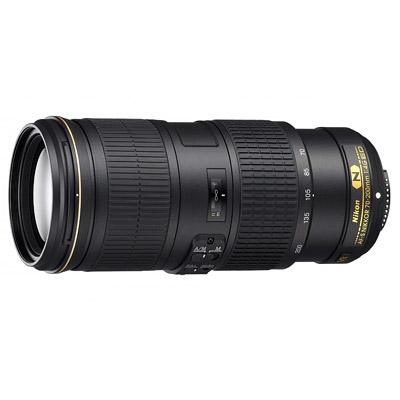 | Nikon AF-S 70-200mm f/4 G ED VR Pros: construction quality, yield, AF, VR, tropicalization, weight Cons: collar, perhaps a bit anachronistic in design, slight trend at BF at 200mm at MDF Opinion: I am a lover of the 70-200, having used the entire Canon range in the past. From Nikonista converted I got to use: the 2.8 Z, FL and VR 2, the 2.8 G2 of tamron and the 70-210 F4 of Tamron. I recently replaced the latter with the 70-200 F4 VR, the subject of this review. Although I consider the new Tamron a very good goal, I found the Nikon significantly superior, despite being 6 years older (2012 vs 2018). The construction and mechanical quality is excellent: although not in metal, the polycarbonate barrel conveys a "premium" feeling and is not subject to easy scratches /marks; the rings are fluid and precise and the weight distribution is excellently balanced. Tropicalization is done to perfection, unlike the 2.8 VR II which is a vacuum cleaner: mine is very clean despite the 3 years of life. The AF is one of its strengths (far superior to that of the Tamron F4): lightning fast and very precise (except for a slight tendency to BF at the minimum distance of MAF and at 200mm, which is reiterated on numerous sites and also present on mirrorless, however "strange"). The AF excursion limiter further helps to improve speed when there is no need to shoot less than 3m from the subject. The image quality is already excellent at F4, with a very slight drop on the longest focal points at close range, but from F5.6 it is very sharp. Excellent color rendering and microcontrasto. The bokeh, for a 70-200, is very good: it has a certain "creaminess", better than tamron which is a little too black-hot. The difference from 2.8 is not abysmal, quite the contrary. It can therefore also be used for some portraits, although it is not comparable to a medium-luminous fixed canvas. The magnification ratio, although not that of the Tamron F4 (0.32 vs 0.27), is still very high, having good macro capabilities. The stabilizer is excellent, well above the Tamron, we are almost at the levels of 200-500, it also shoots at 1/30imo at 200mm. I consider it superior to all 70-200 for Nikon, F2.8 or F4, except the FL and Z version (sharper and more pro, but from the more nervous bokeh in the case of the Z version, although more accentuated due to the stop in +). A really great 70-200, to which I give a 10 and praise. Unique "criticisms": the collar is not included and the original costs madness, but you find excellent compatible around; the design is a bit anachronistic (but maybe I am used to the new "Z" and today's more "business style" design). PS. I use it with great satisfaction on the Z6 + FTZ, waiting for the F4 Z. sent on May 09, 2021 |
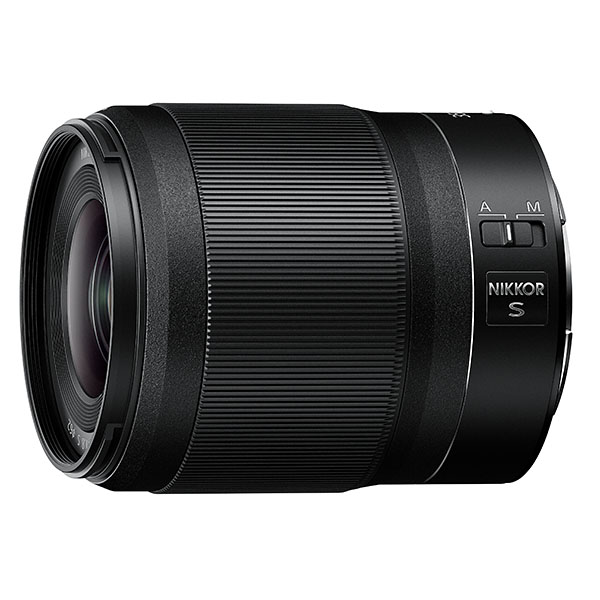 | Nikon Z 35mm f/1.8 S Pros: Sharpness, MAF speed, MFD, bokeh, three-dimensionality and microcontrasto, versatility Cons: Price Opinion: I made the switch from 50S to 35S, as I wanted to return to my favorite fixed "all-rounder" focal. I was a little hesitant since the fiftieth is now universally considered one of the best S-lines, while of the 35 you can also hear some criticism. However, I had to believe again, certainly the 35mm are a focal point optically more "problematic" and you can see it: at TA it is slightly less sharp than the 50 S, there is some (slight) longitudinal aberration and (turning off the in-camera corrections) distorts a little, but this does not detract from the fact that it is an exceptional lens. The AF is (almost) lightning fast and silent and the optical drawing in floating groups allows excellent image quality even in close shots, in fact it left me speechless the magnification ratio that reaches the MFD of only 0.25 m (then if you want to make it a macro, just the 11mm Meike tube). Note: the two AF motors feel "different" if you are used to the single-engine 50S, at least in the early days you will get the feeling that there is something "strange", but everything is normal. The images he churns out are splendid, he has a very pleasant and quite soft bokeh even with difficult backgrounds (branches, leaves) - I like it more than that of the 50S, an excellent color rendering and, least of all, it has a microcontrast and a consequent three-dimensionality that reminds me of my beloved Zeiss Distagon 35 (better than the 50 S which, in my opinion, has flatter tonal passages). The central sharpness at TA is excellent and the peripheral is still great, forget pixel-by-pixel comparisons at 200% zoom, I guarantee you can use it at F/1.8 with superb results. It is equal to the 50 S as size and similar as weight, so large enough for a 1.8, but the philosophy of the Z line is completely different (and you can also see it from the prices, unfortunately): the 1.8 is no longer the economic alternative, but a professional-class product, with a complex optical design and excellent optical yield. The construction quality is the typical S-line: minimal design, almost "business" (I like it very much), well protected from dust and humidity. The manual MAF does not convince me much: it is electronically controlled as on all the new Nikkor Z (except the expensive Noct, by the way manual) and does not, in my opinion, have the precision and feeling of the "mechanical" ring. In the automatic MAF position, other functions can be assigned to the ring (iris, exposure compensation, ISO), but in my opinion the answer is too sensitive. In conclusion, an excellent Nikkor Z that offers lovers of bright fixes the ultimate "all-rounder" solution. Vote 10. sent on March 16, 2021 |
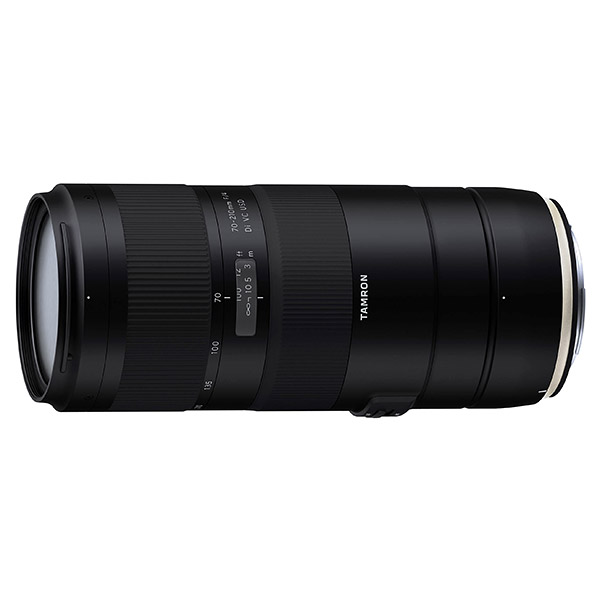 | Tamron 70-210mm f/4 Di VC USD Pros: price, sharpness, excursion, MFD, versatility, bokeh, VC Cons: VC configurations, collar failure, 210mm performance and minimum MFD, lack of AF limiter Opinion: I've had it for two weeks and I tested it almost daily on the Z6 + FTZ. Before the switch to ML, I had my brother 2.8 G2, which I was very happy about. Now, I decided to have a light 70-200 (pardon, 210), sacrificing a stop of brightness. The construction, although plastic, is very good. Unlike its older brother, the barrel is not metallic, but opaque black polycarbonate (aesthetically beautiful, but easily subject to scratches and marks), the zoom ring is always in an "external" position, so more uncomfortable than the Nikon/Canon version. The two rings (MAF and ZOOM) are precise and fluid. The "tropicalization" is lighter than the older brother, according to tamron specifications, but there are gaskets at all critical points. The collar is not included and the original one costs madness. The AF is not bad at all, especially when the light and/or subject "help" it, but the lack of the limiter is felt, all the more so in more difficult conditions in which it is "forced" to make the complete rounds. Tried on a friend's D500, however, it has improved considerably, of course the camera's AF also matters a lot. The 10 mm more can be noticed, but you can feel even more the excellent minimum distance of MAF (MFD), reaching a magnification ratio far higher than the G2, remarkable I would say. The problem is that at 210mm and at the slightest distance of MAF it is a bit soft, but closing at F8 the situation improves a lot. Outside of these "extreme" uses, it is very sharp already at TA, and has a pleasant bokeh especially at short distances, so it is also suitable for portraits in the absence of a bright fixture. Otherwise, the bokeh is still pleasant, albeit a little nervous with certain backgrounds, but in line with the other 70-200 I had (2.8 included). The overall yield is excellent, except for the flare resistance which is not the maximum (as on almost all canvas zooms). The VC is good, but it is not very customizable: it does not have a pan function and the viewfinder/shot priority must be assigned via console tap-in. By prioritizing the viewfinder, you notice a noticeable improvement precisely in the "viewfinder", but according to Tamron it is less efficient for the actual shooting. Personally, I did not notice this drop in "efficiency", but I still decided to leave it on "standard". For fast-moving subjects, at least in my modest "tests", it is better to turn it off. It is clearly a stabilizer not optimized for a "sport mode", and it can also be seen from the actual lack of a panning mode. All in all, given the price and the characteristics, I consider it a very valid alternative to the 70-200 F4 of the parent companies, another lens that honors the new Tamron line. Grade 9+. (I'll update the review if necessary). sent on March 11, 2021 |
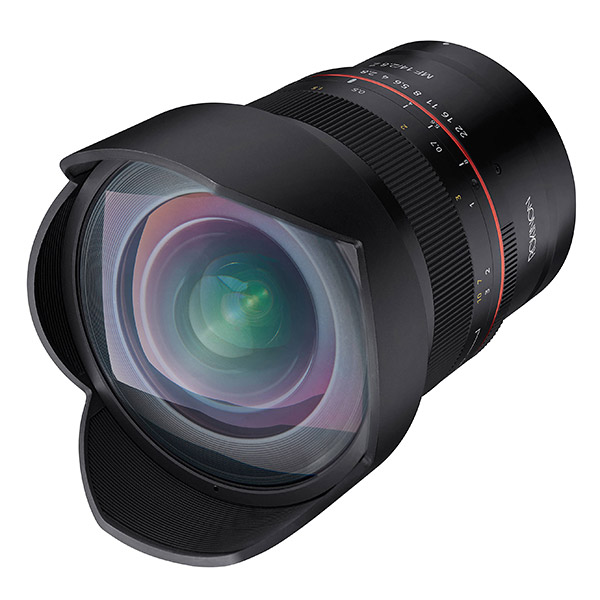 | Samyang MF 14mm f/2.8 RF/Z Pros: Sharpness, construction, price Cons: Weight, lack of electronics, distortion Opinion: I have always used the old Samyang 14 2.8 with satisfaction, but unfortunately on FTZ it gave problems (exposure meter and diaphragms in tilt). There was the solution of covering the first pin or taking an electronics-free F-Z adapter, but I preferred the new native Z-mount version for convenience issues. This is optically the famous Samyang 14 UMS Apsherical, but in a metal body decidedly more "premium" (and also heavier) and - as described on the official website - tropicalized. Fluid MAF ring, the rubber has a good feeling but strangely it looks slightly wider (slightly) than it should be, the diaphragm ring has the "decided" shot as on the Zeiss. The metric scale on the barrel seems precise to me, unlike the reflex model that often, in addition to the incongruity of the scale, also needs the calibration of the barrel. It does not allow circular front filters (but there are around the famous slab filters), at the back it has the attachment for the appropriate filters, but I do not know if they are of a standard size or if they make cut out or taken ad hoc. Excellent central sharpness already at TA, good one at the edges closing a little. The distortion is very marked and rather "strange", so it must be used with the perspective precautions necessary to reduce its effects as much as possible. The correction algorithms built into popular software still work very well. The flare resistance is very good (except for direct and very intense lights that produce an annoying circular effect), much better than the Tokina 16-28 or the disastrous Sigma 12-24 (the old FORMER DG, not Art!). The color rendering is faithful and has the saturation that I like, maybe I'd like a little bit more microcontrasto. It is completely manual, no EXIF data is communicated (the camera will report only the maximum aperture set for lenses without CPU) and you work in stop-down, the exposure meter of the Z6 still works well even if the "recalculation" is not immediate (the machine is not helped by any electronic information, so it is there). Lens that I recommend for landscapes, astrophotography, interior photos (positioning itself so as to limit distortion to the maximum), creative photos. Not recommended for architecture and all areas where a marked distortion is a serious limit. It's definitely not the gorgeous 15mm Zeiss, but given the price, performance and the fact that it's a full-frame 14mm, I'd say it deserves an 8.5. sent on December 09, 2020 |
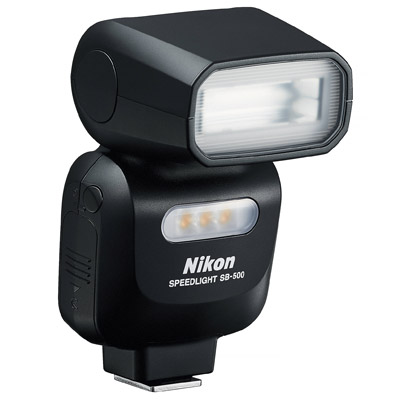 | Nikon SB-500 Pros: Small, light, LED, CLS Cons: lack of manual controls, a bit high price for an GN24 Opinion: I took the SB-500 for the Z6 and find the match really great. I already have a Nikon SB-910, a Godox TT685N and a Metz 52 AF-1; powerful and "pro" band flashes, but unbalanced on Z bodies. I excluded the SB-300 for various reasons (AAA batteries instead of AA, GN18 instead of 24, no CLS etc.) and decided to take the SB-500 as I consider it a fair compromise between size and functions. It is a fixed-parable flash (24mm) and an GN24 measured obviously at such coverage (the SB-700 is GN23 at 24mm..), in my opinion powerful enough for most "ordinary" situations where a flash is needed. In addition, instead of traditional AF-assist light (which does not work on mirrorless), there are 3 LEDs of the same flash light temperature, set to 3 power levels (max 100 lx, nothing extraordinary, but certainly useful in some situations). Used with two AA Eneloop Pro batteries, charging times are very fast (for full-power flashes - about 3 sec) and remarkable range. In addition, it is fully compatible with the CLS system in TTL mode or manual optical transmission, so it can act as both a wireless commander and a slave (assignable to group A or B of the third channel). I tried it in combination with the other two flashes in my possession and it works perfectly. The only negative note is the lack of manual commands on the body of the flash, so apart from the setting such as FLASH/LED/WIRELESS SLAVE, everything else must be set by the camera (TTL or manual mode, commander mode, compensation etc.). I find that the SB-500 is the perfect flash for mirrorless and can cover a good part of the scenarios of using a flasher. It is certainly the best compromise between weights, dimensions and performance and the ideal would be to combine it with a more powerful model (maybe third-party: Godox, Nissin, Metz ...). The SB-700 is Nikon's only home alternative for those looking for a more advanced product, but still less bulky than the big models. The decision rests with you, I am fully satisfied with SB-500 and I think that, considering its merits and shortcomings, it deserves a 9.5. sent on November 27, 2020 |
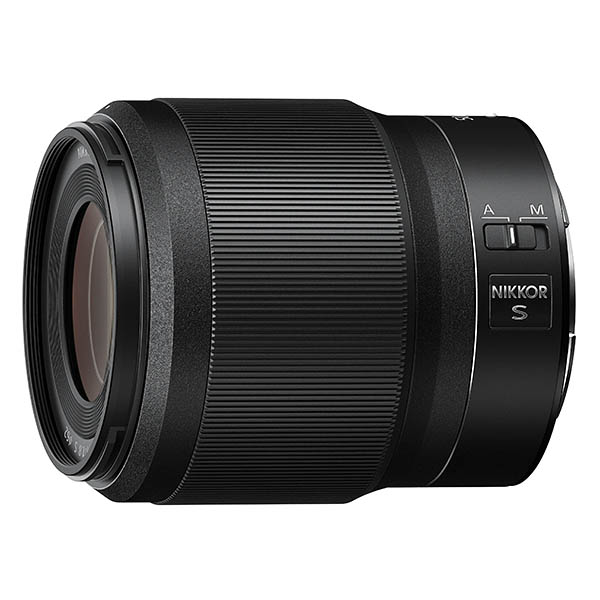 | Nikon Z 50mm f/1.8 S Pros: Sharpness, tropicalization, ergonomics, AF, feeling Cons: nothing relevant Opinion: I took it because I wanted a Z light optics to complement the excellent 24-70 F4 S. As already written in the review of the 24-70, I am very happy with the construction quality of these Nikkor Z: minimal design, "premium" feeling (this 50ino conveys a sense of solidity decidedly superior to the aforementioned zoom), excellent tropicalization. In addition, the optical quality is remarkable: monstrous sharpness already at TA and on the entire frame, absence of aberrations, color rendering, flare resistance. There is also the downside: such a complex optical design affects the bokeh, the tonal passages and the microcontrasto. Compared to the Zeiss optics that I continue to adore (especially those of the Classic/Milvus line, based on the old Planar, Distagon etc.) designs, it is decidedly more resolute and free of aberrations, MA has a more nervous bokeh and a three-dimensionality in the lower yield. Nonetheless, I find the bokeh still pleasant and superior to 50 art (which I find too hard), and in any case the final results are fantastic. It is a native Z optics and you can see it ... the IBIS works at full capacity (up to 5 stops), the AF is lightning fast, the integration with the machine body is absolute. I don't like the electronically controlled manual MAF, but except for the very expensive Noct (by the way af-free), all Z optics are like that. To the ring (metal, unlike the 24-70 which is rubber) I assigned the exposure compensation, but in my opinion the answer is too sensitive. In my opinion, it is the ideal lens to combine with the 24-70 F4 (and possibly the 14-30), because it is an extremely versatile luminous fixed. I, in the future, point to the trio Z 20 - 35 - 85, but for now I am fully satisfied with the two Z lenses in my possession. In conclusion, I would give a 9.5 to this 50 1.8 S, it will certainly not disappoint you. sent on November 26, 2020 |
 | Nikon Z 24-70mm f/4 S Pros: compact, very sharp, general yield, tropicalized, AF, minimum MAF distance Cons: retail price, excursion, vignetting at 24mm Opinion: An all-rounder that honors the Z. Leggero series with a "sober" and minimal design (I really like it). Despite the fairly "plastic" construction, the overall feeling is of a "premium" product (by today's standards). Tropicalization is as good as on all Z lenses: the seals protect very well from dust and moisture. I don't particularly like the retractable design that requires extension for use, but this helps reduce clutter during transportation. Optically it's great: very sharp already at TA on the entire excursion and on the entire frame, but closing a stop you are at really excellent levels for a zoom. Excellent contrast and color rendering, almost non-existent aberrations and excellent flare resistance. On the other hand, at 24mm the vignetting is strong, but easily correctable. The bokeh, for an F4, is very pleasant. While not incorporating VR, it takes full advantage of the IBIS and the 5 stops that Nikon talks about seem to me to be true (you can see the difference compared to the lenses not stabilized on FTZ!). I do not like the electronically controlled MAF, I have assigned to the relative ring the exposure compensation function (too sensitive though). The AF is lightning fast and (of course) precise. The reduced minimum focus distance and the 0.3X playback ratio, as well as the excellent sharpness, also make it a good macro "seed". Being an F4, I would have preferred a pusher excursion (120 or at least 105mm, by the way the latter coming according to Nikon's timeline) and the Nital retail price is prohibitive (so I recommend it in kit or used). I think the F4 is fine for most uses (combined perhaps with some bright fixtures, even on FTZ). I do not recommend the FTZ + AF-S 24-70 2.8 (VR or non-VR): in addition to unsustainable dimensions, the optical yield is lower (at least that of non-VR, I tried it on my Z6). Who wants at all costs a bright all-rounder for Nikon ML, go for the fantastic (and expensive) 24-70 2.8 Z (but I, for that figure, would take these three fixed Z:20, 35, 85). Returning to the 24-70 F4 S, considering its merits (many) and defects (few), as well as versatility, it deserves a 9.5: on many Nikon Z will remain perpetually "glued". sent on November 15, 2020 |
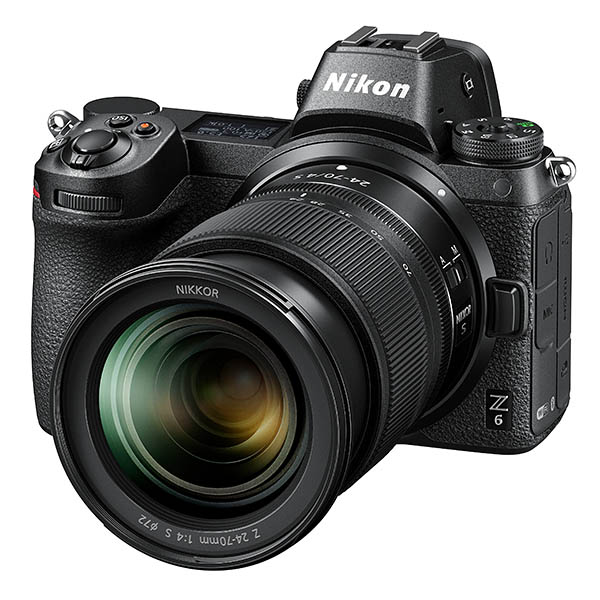 | Nikon Z6 Pros: Construction, ergonomics, sensor (ISO, dynamic range), EVF and LCD screen, IBIS, menu, lens compatibility (Z, FTZ and draft), weight Cons: 1 x XQD, commandless grip, sometimes WB and automatic viewfinder brightness, not innovative compared to the competition Opinion: Starting from the construction quality, the teardown of lensrentals speaks clearly: robust, gaskets everywhere, an ML designed properly (I would add: except for the external tires, which unfortunately tend to spoil themselves too easily). The ergonomics are very good, the deep handle makes the grip firm, but for those with medium-large hands, it improves when used with an arca-swiss plate with the "extension cord" of the handle or with the grip (which unfortunately does not replicate any buttons, unlike the grip for the Z6/7 II). The unique XQD/CFExpress slot is, in my opinion, a potential impediment to professional use, however reliable such cards are (and also very fast ... and very expensive). The USB C interface and the ability to charge the EN-EL15B/C in-camera (unfortunately only on the II series you can charge while in use), as well as WI-FI/BLUETOOTH connectivity, are definitely an added value. The EVF, to which I had enormous prejudices, has instead proved to be a great friend: now I believe that the advantages over the optical viewfinder far outweigh its disadvantages. The sensor is exceptional, churns out wonderful files, with impressive high iso seal and dynamic range. The mechanical shutter is very quiet, but there is also the possibility to use it in fully electronic mode, which can come in handy on many occasions (remembering, however, the risk of banding with some light sources). It works great with FTZ and F-mount optics (Nikkor and recent third-party lenses, unfortunately some older non-Nikon lenses give problems) adding not only stabilization to all, but also maximum accuracy in MAF, manual optics included (I assigned the zoom to 200% which is very useful when working on large openings, then there is obviously also the useful but not perfect focus peaking). Note: Focus confirmation does not work with all manual lenses, such as Zeiss ZF.2 implement AI-P "protocols" and do not communicate distance, so you won't have the indicator. The MAF in poor light conditions does not convince me much, but by enabling the appropriate option, the situation improves (although it suffers a somewhat marked slowdown). Eye detection works well, but not at Sony levels. I would have liked eye detection even in MF mode, it would be very useful with manual optics, as it would allow you to zoom directly on the subject's eye and focus (avoiding making the rounds of all maf points). The AF-C in car mode works surprisingly well, tested with both the 70-200 2.8 G2 Tamron and the 200-500 (which does not shine for AF and is an F5.6), gave me satisfaction (of course, we are not at the levels of a flagship or a D500.. and then there is the EVF lag). The Z optics surprised me positively: I have the excellent 24-70 F4 S and 50 1.8 S and soon I will add the 14-30 and the 85. Let's also remember that the era of "Z Mount" lenses has just begun. In addition, the 16 mm pull makes the Z series ideal for having fun with vintage optics (making them stabilized and having the opportunity to focus with maximum precision). The lack of some buttons that I had become accustomed to on the D8XX series, is compensated by the highly customizable menu: "i" button and the ability to recall 12 functions, customizable "REC" button in "photo" mode etc. They say it's great for the video department too, but it's not my field and I don't have the skills to express myself. The battery, when used with "criterion" (preferring use in "viewfinder priority"), has a very good life in my opinion for an ML (the EN-EL15C that I took apart further improves autonomy, the about 400 more mah feel). All in all I consider the Z6 a very successful ML and able to give great satisfaction. Grade 9+. sent on November 03, 2020 |
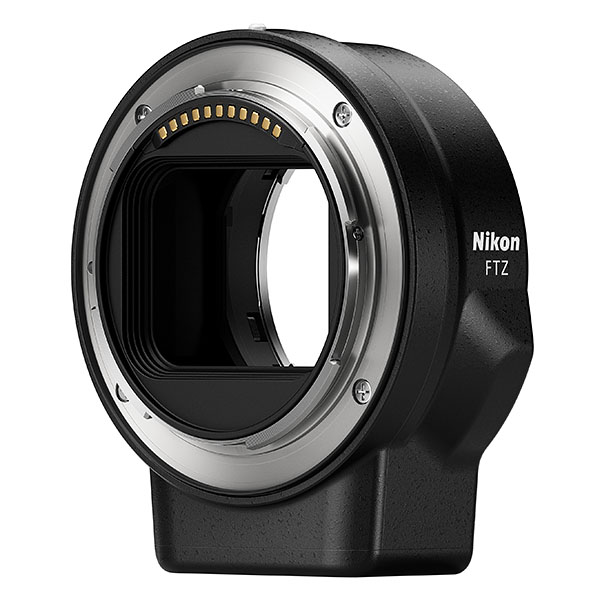 | Nikon FTZ Pros: Build quality, tripod attachment, functionality, upgradeability Cons: no AF engine, unacceptable list price Opinion: Impeccably constructed adapter, construction tolerances of absolute precision (there is no game) and excellent materials (there are also teardowns in the net that demonstrate its robustness). The integration of the tripod attachment that allows a better distribution of weights is very welcome, thus avoiding the stress on the bayonet of the camera and /or the tripod attachment of the same - nevertheless, heavy optics must always be used with the appropriate collar, to avoid excessive pressure on the F bayonet of the FTZ. It is essentially an adapter that transmits and manages electronic signals and extends the pull of the Z-Series ML to the length provided for Nikon SLRs, so that the F-MOUNT lenses can be used according to the original construction parameters. There are therefore no optical elements and there is no loss of brightness. Of course there is also the diaphragm actuator that acts on the appropriate mechanical lever of the Nikkor F-Mount lenses and compatible, but of course it also works with the lenses equipped with electronic diaphragm (E). However, there is no focus engine that, in the D7XXX series and higher SLRs, controls the autofocus on the "AF" targetses (without internal motor). The inclusion of the same would probably have greatly increased the weights and size of the FTZ, as well as energy consumption, but this does not alter the fact that its lack remains a noteworthy loss. You therefore have full functionality with AF-S, AF-P and AI-P optics and on the others you lack autofocus. On ai-p equivalent lenses (such as zeiss, zf.2 or milvus), the rangefinder does not work, but I solved with a zoom 200X assigned to one of the FN keys, on lenses instead equivalent AF and AF-D, there is also the rangefinder with the indications on focus (and confirmation ball). The lenses without CHIP or with CHIP that give problems (for the latter situation there are those who cover the power pin, but I would recommend an economical Z-F adapter without contacts, in order to avoid damage), must be set up and then recalled in the appropriate section of the menu: exposure measurement and stabilization will still be available. By mounting DX lenses, it will not be possible to force FX mode (unlike the Nikon DSLR), except for any "physical" decoys or future updates that will unlock this function. The FTZ, like the native Z optics, works in stop down (diaphragm closed to the value set even during vision) up to F5.6, so the PDC will be immediately assessable (except for values below F5.6, so the pre-display function will have to be invoked). I personally believe that this stop down operation is beneficial for the diaphragm, be it mechanical or electromagnetic, as it is subjected to less "effort" than the DSLR system. Finally, the FTZ is equipped with upgradeable firmware, which is a valuable note. Version 1.10 introduced the possibility of updating F-MOUNT (Nikkor obviously) optics, which is certainly a good thing for any corrections that will be necessary in the future to improve the operation of the Nikkor F on the new Z's. The only real negative note (leaving aside the lack of the AF engine): the aperture detector is missing and does NOT regulate the diaphragms on lenses without CHIP, so with all AI-S optics and also recent ones without chips (such as zeiss ZF ...) you work in stop down and the saved exif data will report only the maximum aperture value (set in the section "CPU-free lenses"). All in all he deserves a 9. sent on October 04, 2020 |
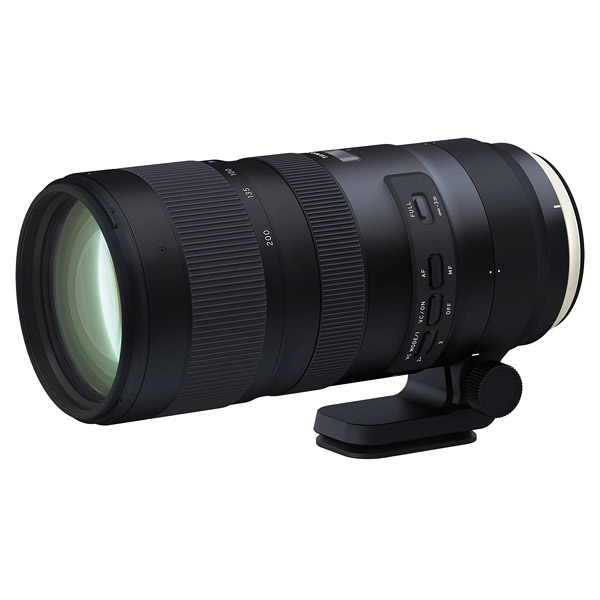 | Tamron SP 70-200mm f/2.8 Di VC USD G2 Pros: Colors, bokeh, sharpness already at TA all over the frame, stratospheric VC, autofocus, console compatibility, performance with extenders Cons: Lamp of lamp, barrel paint, key arrangement Opinion: In the days when I was a photographer by profession, the only 70-200 noteworthy were those of the mother houses. I worked a lot with the 2.8 IS II, the famous canon white, but I also knew my counterpart Nikon well (by the way, now I made myself a Nikon kit.. ). Stratospheric lenses that until recently are unattainable by third-party manufacturers. Well, yes, those days are over. This Tamron 70-200 2.8 G2, which I have owned twice, is a dream come true. Let's start with the build quality: tropicalized body, metal, relatively light, fluid and precise dials (although, to be honest, those of the Nikon/Canon are even more fluid), removable magnesium alloy collar and compatible swiss ark. The only negative points relate only to the construction aspects and in particular: the horrendous lamp (of which everyone rightly complains), the painting of the barrel (too sensitive to scratches) and the position of the selection keys as well as their protrusion (at the moment when the lens is in the "pendant" position on the shoulder strap, on contact with the photographer's body the position of the keys tends to change inadvertently). Apart from that, the lens excels in all other parameters: lightning and silent autofocus equipped with limiter whose minimum distance is by default 3m but can be modified with the console; Excellent VC with 3 positions: normal, panning and stabilization only at the time of shooting: the third mode allows you to reach up to 5 stops, but in the viewfinder the image will not be stabilized. In terms of sharpness it is a blade already at F2.8, even at the edges, but for those who want the maximum just close by a stop and up to F11 the quality is superb. The vignette is present only towards the focal points pushed to 2.8, but closing a stop the problem is solved. The rendering of the colors is wonderful and the aberrations almost non-existent. Also great is the bokeh, even closing (it has a 9-bladed circular diaphragm; interesting note: it's also electromagnetic on Nikon, so the limitations for "E" type lenses apply). Despite the focal and complex optical design, very good resistance to the flare. Duplicated with the Tamron TC-X20 extender it performs very well (fast autofocus, minimal sharpness loss and visible only to TA-driven focals), much but much better than the excellent 150-600 G2 which should only be used with the 1.4X. I absolutely recommend the TAP-IN console, in addition to being able to update the firmware (the Nikon Z ML requires version 2.0) you can calibrate it precisely and unfortunately this intervention is necessary for DSLRs. If you use it with the duplicator, it is possible (and even dutiful) to calibrate it ad hoc. In conclusion, a Mr. 70-200 who honors Tamron. Vote 10. sent on August 21, 2020 |
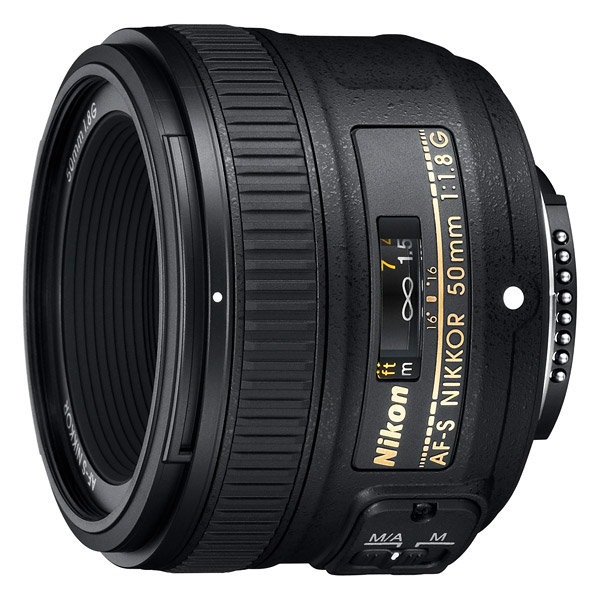 | Nikon AF-S 50mm f/1.8 G Pros: Sharpness, lightness, price, color rendering, bokeh, exceptional even on Z series Cons: nothing, given the price Opinion: sent on July 08, 2020 |
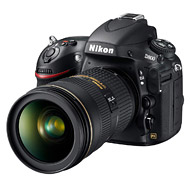 | Nikon D800 Pros: Wonderful sensor, construction, ergonomics, built-in flash, USB 3.0, dual board (sd+cf) Cons: burst, WB, noisy, micromosso, on early models AF problems Opinion: sent on June 27, 2020 |
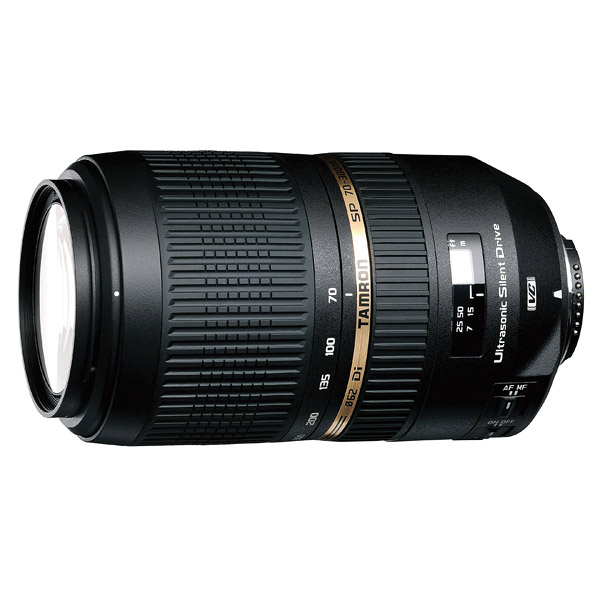 | Tamron SP 70-300mm f/4-5.6 Di VC USD Pros: Price, sharpness, stabilization, F4 at 70mm Cons: autofocus, sharpness after 200mm Opinion: Used to the days when I was a photographer by profession, working with high-level optics, I expected a mediocre 70-300 amateur. None of this, in relation to price is a really impressive goal, both on APS-C and on FF. In the range 70-200 is very sharp, even at TA, but closing by a couple of stops the result improves not a little, even on very dense sensors like that of the D800. The sharpness at the edges is good on FF, but not excellent (we're talking about a supertele from 350 degrees ...). Closing in on F8-F9 gives you great results. From 200 to 250mm is good, over 250mm is soft. It is more massive than the typical FF 70-300, but this is also justified by that 70mm half stop (F/4.0 instead of F/4.5) that can come in handy. The bokeh is very pleasant (thanks also to the 9-bladed diaphragm), which makes it a suitable lens for portraits too, a good compromise in the absence of a bright fixed. The focus is precise and the speed is good in optimal conditions (both contrast and brightness), but in terms of yield it is inferior to both Nikon and Canon counterparts, and is obviously unparalleled to the latest generation engines (such as Nikon's AF-P lightning). The stabilization, despite being old-generation (so noisy and a little slow in "hooking"), is remarkable in terms of compensation (3-4 stops). The build quality is good and gives a fairly robust feeling (although it is made of plastic), the MAF ring is precise, but the fluidity of the zoom ring is not the best (typical of plastic supertele). Mount 62mm filters. In conclusion, an unbeatable lens as value for money, not without flaws and limits (also dictated by age), but still able to give satisfaction. sent on June 07, 2020 |
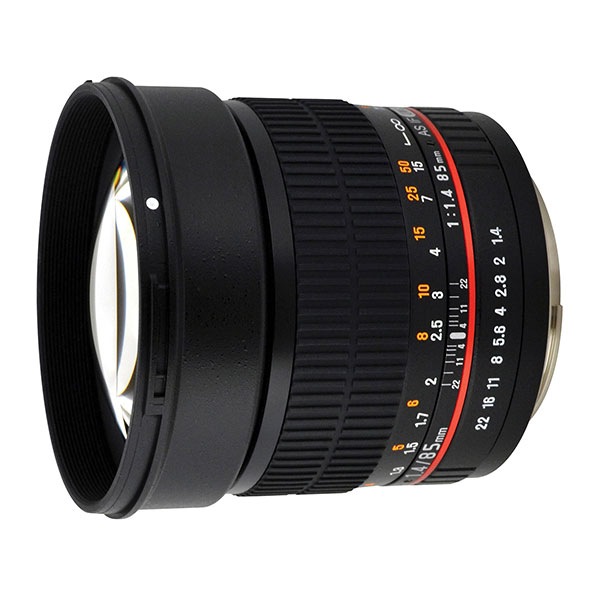 | Samyang 85mm f/1.4 AS IF UMC Pros: Sharpness, bokeh, feeling, price Cons: Purple fringing, MAF precision Opinion: It is an improved lens compared to the first version (the one with the golden ring), whose UMC treatment makes all the difference. The build quality is very good, but with some obvious flaws: positively there is the metal construction - fluid focus (a little less precise than the Zeiss I own, but the feeling is still very pleasant) - main metal body - diaphragms (at least x the Nikon model); of negative there: unspecified focus scale and above all the lack of a "fixed ring" to hold the lens at the time when you mount/disassemble/disassemble the lampshade, carrying out these operations by holding the focus ring there is a risk of sending it out-calibration (beyond the infinity or minimum distance) for the required effort. The same fits in the right position with ease, but in the long run this can create damage, so with the lampshade mounted "normally" always keep it from the top of the barrel, when instead you mount the lampshade in the "rest" position, keep it from the bottom fixed part of the dial - the one where it is written "1.4/85", so do not jeopardize the diammi. The infinite focus is embarrassing, yes for the excursion, both for the lack of precision, but being a lens that arises for portraiture is not a serious problem (and in any case, with a minimum of dexterity the problem is solved even for distant subjects). Speaking of optical quality, however, I was pleasantly surprised by the sharpness, even at F1.4, obviously as long as I focus with the utmost precision (which is not easy...). Also beautiful is the bokeh, truly remarkable for such a cheap lens. Tried on both the D7200 and the D800, it also proves great on FF, and from F2.8 on the sharpness at the edges becomes great. It suffers from purple fringing and various aberrations, especially with open diaphragms, but for such an 85 1.4 so cheap I would say it absolutely stands there (in PP it corrects anyway). Between F4 and F8 the yield is remarkable. In conclusion, I consider it a fantastic lens in relation to the price, difficult to tame but able to give excellent results even on FF machines such as the D800 (36 megapixel), as long as you know it. Honestly, I prefer it to the 85 1.8 Nikon (but also to that of Canon, which I know well), but obviously can not compete with the 1.4 emblazoned (which cost 5-6 times as much though!). sent on May 19, 2020 |
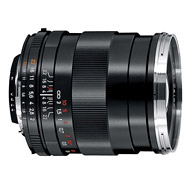 | Zeiss ZE/ZF.2 Distagon T* 35mm f/2 Pros: Superlative construction, feeling, blurry and three-dimensionality, stratospheric sharpness, chromatic rendering Cons: purple fringing, vignette in TA Opinion: sent on May 14, 2020 |
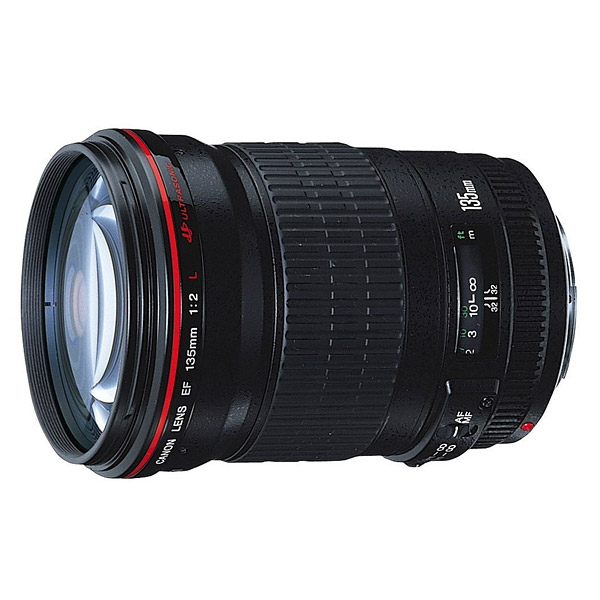 | Canon EF 135mm f/2.0 L USM Pros: EVERYTHING Cons: NOTHING Opinion: It is one of those few lenses devoid of defects. A masterpiece optical and constructive, state of the art. The sharpness in F2 is outstanding, it would be a crime to close the diaphragm. The blur is a dream, are very rare on the lenses that give a digital bokeh like ... even in the more mundane can remove the subject from the background and give a three-dimensional unparalleled. The autofocus is instantaneous, and by inserting the limitation of distance is even faster ... if the light is good enough focus is instantaneous. The build quality is by SERIES L of old philosophy (in fact it is a project quite old): robust, VERY WELL DONE, unfortunately not sealed. The lack of the stabilizer I find as an advantage: the lens less susceptible to wear and with an optical diagram easier, so more quality and less obsolescence. sent on April 25, 2015 |
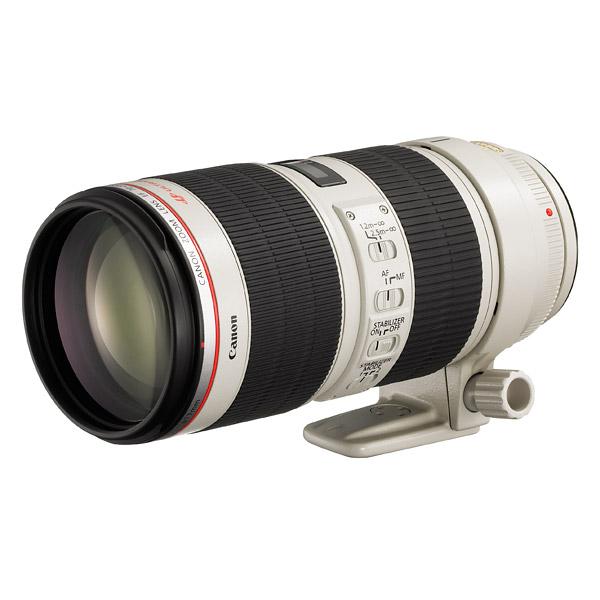 | Canon EF 70-200mm f/2.8 L IS II USM Pros: All over. Cons: NOTHING. Opinion: Objective unique, incomparable. We envy him ALL is the dream of every photographer ... Canonist and NOT. After you have used with great satisfaction the 70-200 2.8 IS II smooth are the beloved past. The picture quality is a dream, incredibly clear and balanced in performance. The optical scheme is a miracle of modern optics, a lens Fluorite and 5 UD ... Build quality at the highest level, a real tank made to withstand even the most demanding conditions. Lightning-fast autofocus, faster than the human eye. Incredible stabilizer, 200 mm shots at 1/8 and you take home sharp photos, panning mode that works to perfection. It's the only really good 70-200 digesting the 2X extender III. Defects has not (apart from the weight, but we can not fault call ... let's talk about a bright and stabilized 70-200). With the achromatic close-up lens Canon 500D has excellent ability of macro ... a lens that you can not complain. sent on June 11, 2014 |
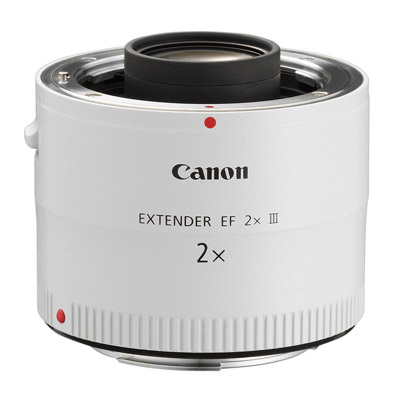 | Canon EF 2.0x III Pros: Sharpness, autofocus, overall image quality. Cons: Nothing. Opinion: Compared to the previous version have made quite a number of important steps, but the differences can be seen well only on very recent paintings. I use the 70-200 2.8 IS II (the only one of 70-200 that digests well 2X) and I must say that the results are really good, there is no comparison with the coupled smooth 70-200 2.8 and 2X II / III. Excellent overall performance, minimum drop in sharpness. The autofocus is slower but when the light is good, there are no major problems. Works even better with fixed (300 2.8, 400 2.8 ... 500/600 f4 for those who have a mark III or a series 1d and then wants to keep the AF). rnrnIl price? I paid 419 euro new, shop and Italian warranty. To double the focal length of your telephoto L series seems OK. sent on June 11, 2014 |
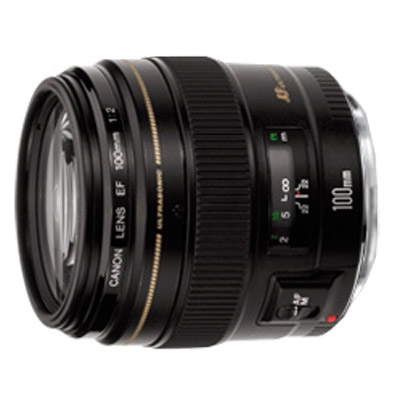 | Canon EF 100mm f/2.0 USM Pros: Sharpness, colors, size, value for money, diameter filters. Cons: Hood ... Opinion: The Canon EF lens 100F/2.0 is a little-known, and perhaps one of the reasons is the fact that the holders of APS-C cameras take 85 1.8 format whose focal FF is equivalent to 136 mm (thus approaching the 135 series L). It is a lens that not even I know, but one day a guy asked me to exchange with my Extender 1.4 II and driven by curiosity I accepted (because the lens was really like new). I immediately liked the excellent build quality, for L series, and the diminutive size. Before you start to use it, read the review by Ken Rockwell, who praised him, saying among other things that it was among the most clear goals ever. So I said, "now is the time to discover this 100 F2" ... Well ... amazing sharpness, color rendition, bokeh - really fantastic already at RT, in a nutshell is a perspective that has left me mouth open. Canon calls it "optics specialist for portraits" and it really is, as it has all the FEATURESpolicies that make it a suitable lens to portraiture. It is without doubt an L series in disguise. sent on May 20, 2014 |
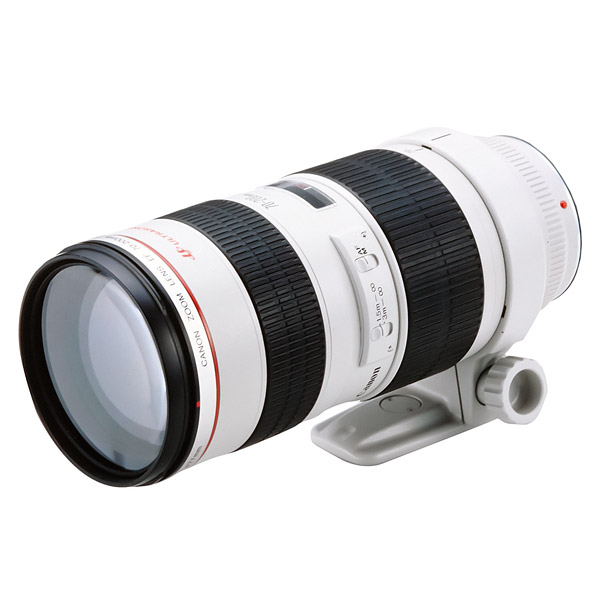 | Canon EF 70-200mm f/2.8 L USM Pros: Sharpness, bokeh, AF speed, optical quality and construction. Cons: Weight, lack tropicalization. Opinion: Maybe it is the lens that I love most, I used it for portraits, landscapes, weddings, wildlife, sports, outdoor and indoor. Despite being a project relatively dated, it is still very valid and I find it a great alternative to the incomparable IS II. Over the years it has proven extremely reliable and robust. It is a very sharp lens even at room temperature, but the best results are obtained by closing two stops. The AF is very fast and very accurate, the building reflects the best philosophy series, L (a tank). Combined with the Canon 500D close-up lens macro gives excellent quality, putting an extender you can also reach the 1:1 ratio. Unfortunately, it is heavy and should remove the ring of the tripod when not in use (it weighs about a pound!), Or at least turn it to improve the ergonomics use freehand. sent on May 01, 2014 |
 JuzaPhoto contains affiliate links from Amazon and Ebay and JuzaPhoto earn a commission in case of purchase through affiliate links.
JuzaPhoto contains affiliate links from Amazon and Ebay and JuzaPhoto earn a commission in case of purchase through affiliate links.May Beauty Be Everywhere Around Me